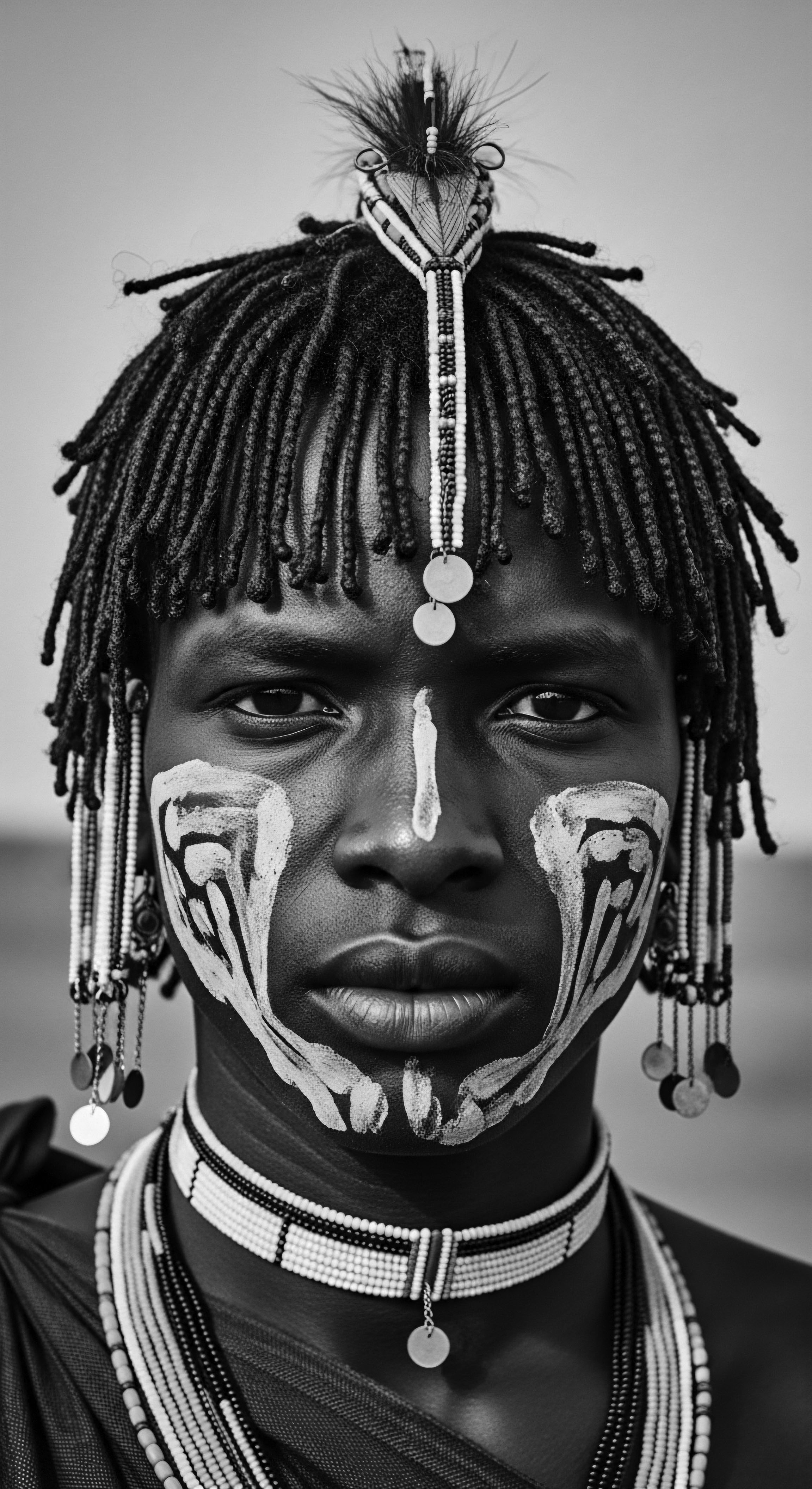
Fundamentals
The concept of Frizz Management, at its most straightforward, describes the collective practices and products intended to reduce the appearance of frizz in hair. Frizz, in essence, is the unruly, often halo-like texture that arises when the hair’s outer layer, the cuticle, lifts, allowing moisture from the air to penetrate the hair shaft. This absorption causes the hair strand to swell unevenly, disrupting its smooth alignment and leading to a disheveled, often dry, appearance. The pursuit of Frizz Management, therefore, is about achieving a more uniform, hydrated, and defined hair texture.
For individuals with textured hair, particularly those of Black and mixed-race heritage, the explanation of frizz extends far beyond mere cosmetic concern; it carries a deep, historical resonance. Our hair, with its inherent coils and kinks, possesses a unique structure. The elliptical shape of these hair follicles means that natural oils from the scalp struggle to travel down the entire strand, leading to a predisposition for dryness.
This dryness, in turn, makes the hair more porous, eagerly absorbing humidity from the environment. When the air is thick with moisture, hydrogen bonds within the hair’s keratin proteins form rapidly, causing the hair to buckle and expand, which then pushes the cuticles open, resulting in what we recognize as frizz.
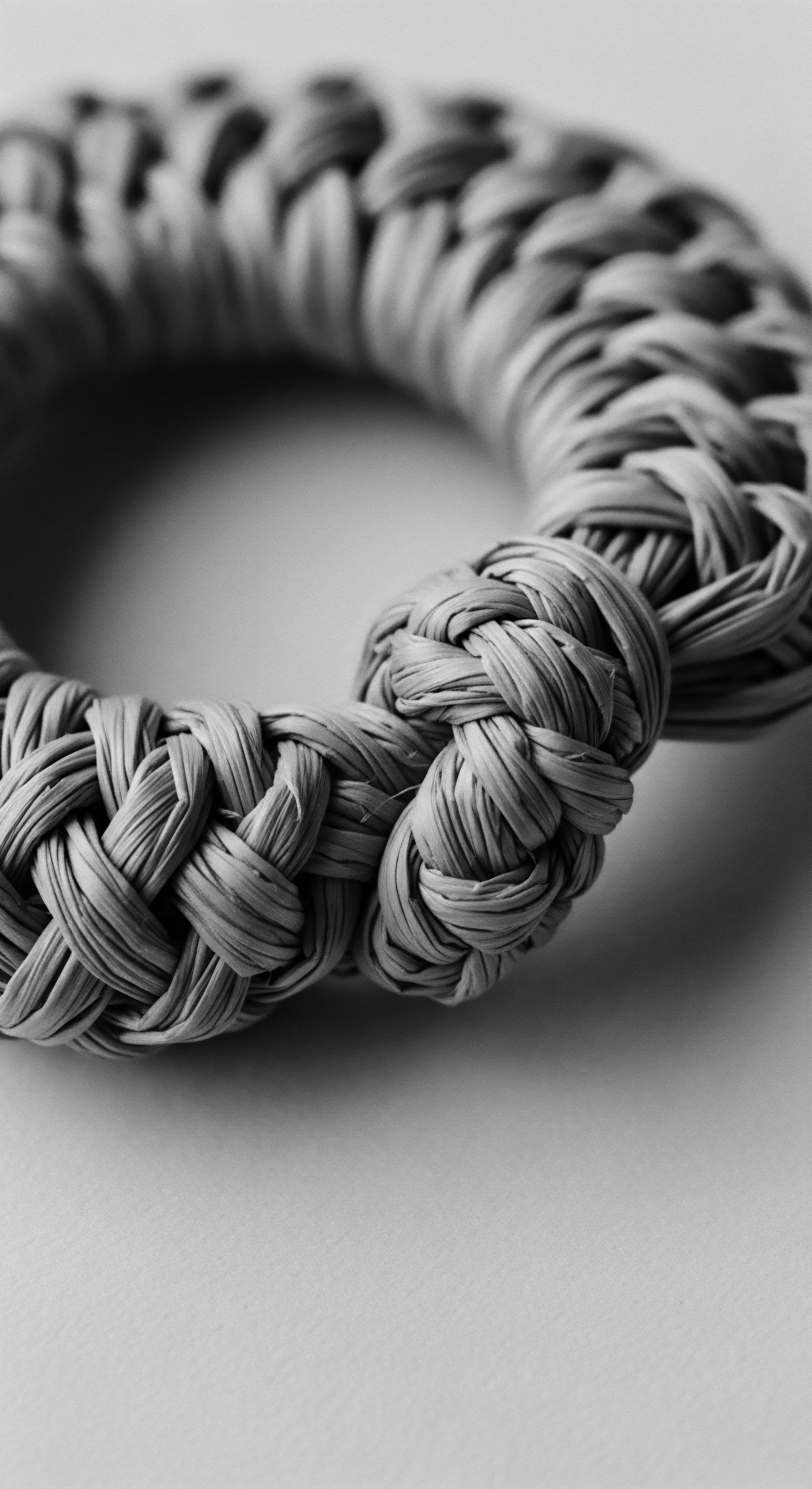
The Elemental Nature of Frizz in Textured Hair
Understanding frizz for textured hair begins with acknowledging its elemental biology. The very structure of our coils and curls, while undeniably beautiful, presents a particular challenge when it comes to moisture balance. Unlike straight hair, which has a rounder follicle and a smoother path for natural sebum, coily and kinky strands possess an inherent fragility due to their twists and turns. This structural reality means that maintaining hydration is a constant, foundational aspect of care, a truth recognized by our ancestors long before modern science articulated the molecular dance of hydrogen bonds.
Frizz, for textured hair, is often a natural response to moisture imbalance, a whisper from the strands yearning for hydration.
The term ‘frizz’ itself, when applied to Black and mixed-race hair, has historically been laden with negative connotations, frequently associated with terms like “unruly,” “nappy,” or “unprofessional” within Eurocentric beauty standards. This linguistic burden underscores how the perception of frizz is not simply about hair texture, but about a broader societal gaze that has often devalued natural Black hair. Thus, Frizz Management, at its most fundamental, becomes a reclamation of autonomy over our hair’s inherent characteristics and a celebration of its natural state.

Early Responses to Frizz ❉ Echoes from the Source
Long before commercial products lined shelves, ancestral communities in Africa developed sophisticated methods for managing hair, including practices that inherently addressed what we now term ‘frizz.’ These were not simply about aesthetics; they were interwoven with cultural identity, spiritual beliefs, and communal rituals.
- Natural Emollients ❉ Communities across West Africa, for instance, utilized ingredients like Shea Butter (from the shea tree, Butyrospermum parkii), Coconut Oil, and Palm Kernel Oil. These rich, natural butters and oils served as potent moisturizers, coating the hair strands to seal in hydration and smooth the cuticle, thereby preventing the disruptive absorption of atmospheric moisture.
- Protective Styles ❉ Braids, twists, and Bantu knots were not merely decorative; they were functional designs that minimized exposure to environmental elements and reduced manipulation, which are key factors in preventing frizz and breakage. These styles, passed down through generations, served as a living library of Frizz Management techniques.
- Communal Care Rituals ❉ Hair care was often a shared experience, a time for bonding and the transmission of knowledge. The meticulous process of washing, oiling, and styling, sometimes taking hours or even days, created a collective understanding of how to best care for textured hair, fostering resilience in the face of environmental challenges.
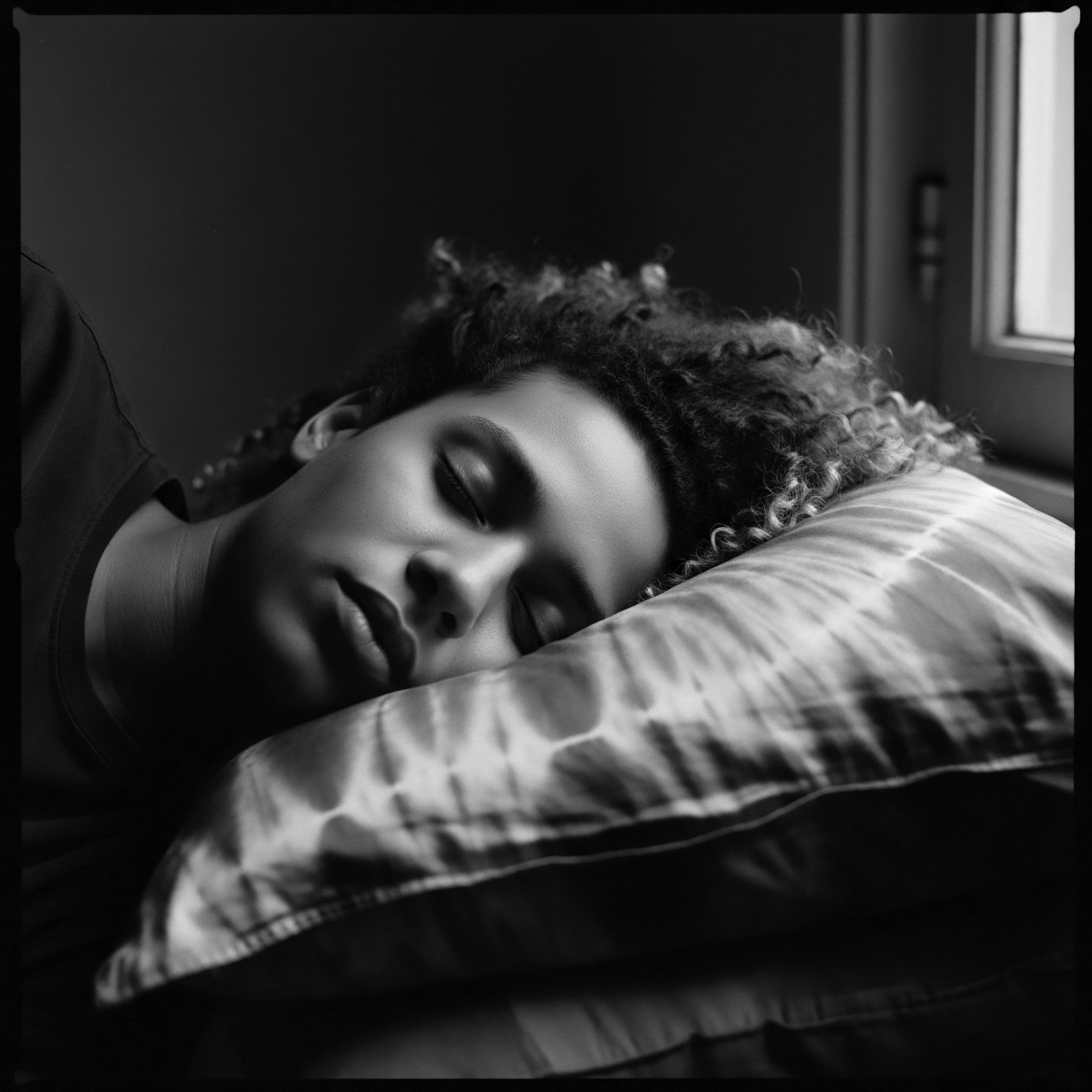
Intermediate
Moving beyond the fundamental description, the meaning of Frizz Management deepens into a dialogue between elemental hair science and the enduring traditions of textured hair care. This discourse reveals that frizz is not merely a superficial phenomenon but a complex interplay of hair structure, environmental factors, and historical conditioning. The clarification of Frizz Management at this level requires an appreciation for how modern understanding often affirms the intuitive wisdom of ancestral practices.
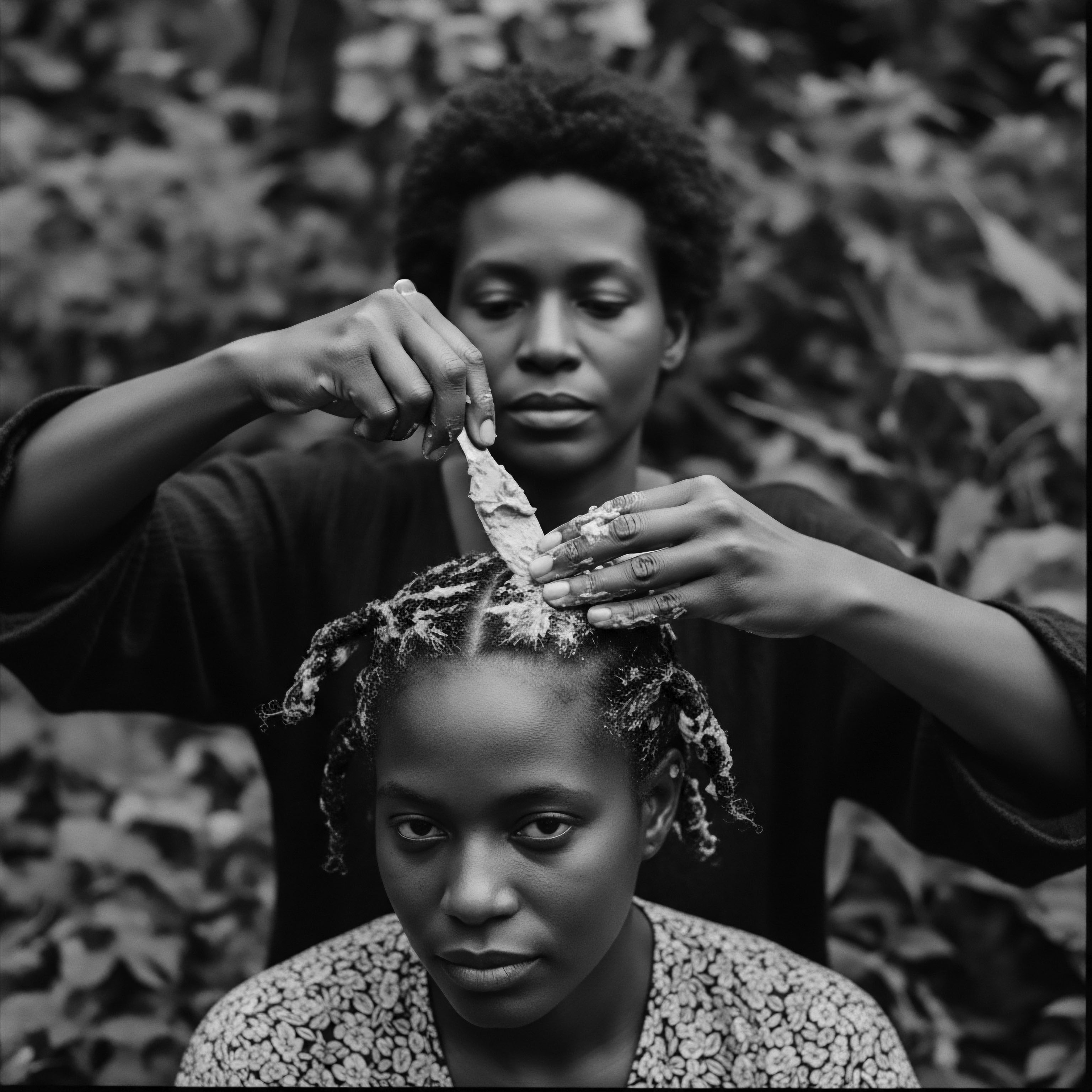
The Science of Hair and Humidity ❉ A Deeper Look
The hair shaft, a marvel of biological engineering, is composed primarily of keratin proteins. These proteins are held together by various bonds, including strong disulfide bonds and more temporary hydrogen bonds. When humidity pervades the air, the high concentration of hydrogen molecules eagerly seeks out the hydrogen bonds within the hair’s keratin structure.
This leads to a rapid absorption of moisture, causing the hair strand to swell and its outer cuticle layer to lift. This disruption in the cuticle, akin to scales on a fish lifting, allows for even more moisture to enter, leading to the characteristic fluffy, undefined appearance we associate with frizz.
For textured hair, this process is particularly pronounced. The inherent porosity of coily and kinky strands, a consequence of their unique helical structure and often naturally raised cuticles, makes them highly susceptible to atmospheric moisture. When dry, porous hair encounters humidity, it acts like a sponge, drawing in water and rapidly swelling, which can cause it to lose its defined curl pattern and become frizzy. The specification of Frizz Management, then, must account for this inherent structural reality, seeking to fortify the hair’s defenses against environmental shifts while honoring its natural inclination.
Frizz Management, for textured hair, is a dance with atmospheric moisture, a delicate balance of sealing and retaining hydration.
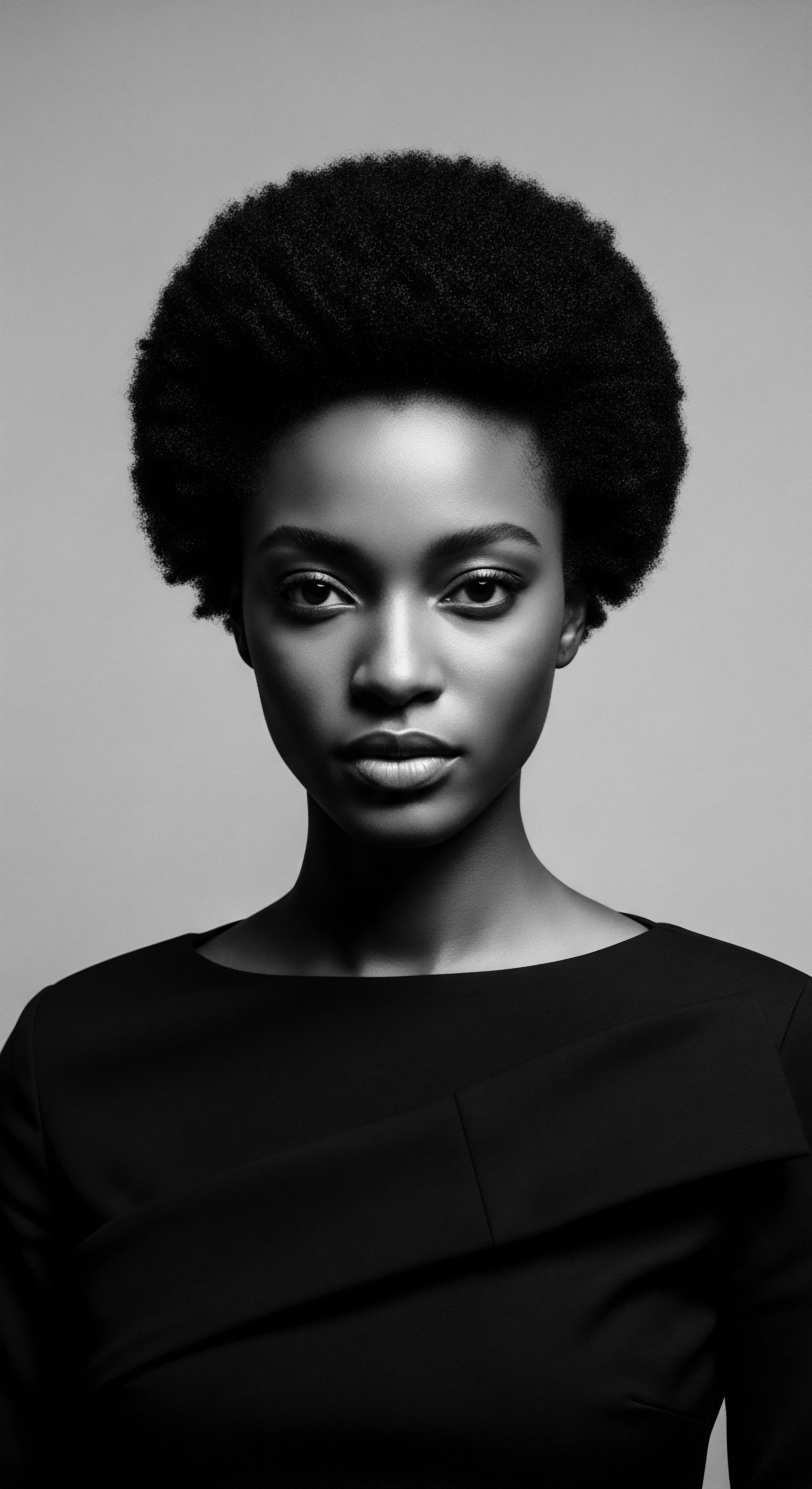
Ancestral Ingenuity in the Face of Environmental Realities
The historical context of Frizz Management within Black and mixed-race hair experiences cannot be overstated. Generations ago, our foremothers developed sophisticated systems of care that intuitively countered the very scientific principles of frizz we now delineate. Their methods, often communal and rooted in readily available natural resources, served as profound acts of preservation and cultural continuity.
During the transatlantic slave trade, enslaved Africans were forcibly stripped of their cultural identity, including the tools and time necessary for traditional hair care. Their hair, once a symbol of status and connection, became matted and tangled under brutal conditions. Yet, resilience shone through. Enslaved women found ingenious ways to maintain their hair, often hiding it under scarves, or using protective styles like braids and cornrows, which sometimes even served as maps to freedom or as repositories for rice seeds for survival.
This historical example powerfully illuminates Frizz Management’s connection to textured hair heritage and ancestral practices. The practices, born of necessity and deep knowledge, provided a foundational approach to Frizz Management that protected the hair from the elements and minimized damage.
| Traditional Practice (Heritage Root) Oiling and Butters ❉ Regular application of shea butter, coconut oil, or palm kernel oil. |
| Modern Link (Scientific Principle) Emollient Action ❉ These natural lipids coat the hair shaft, creating a hydrophobic barrier that repels excess moisture from the air and seals in internal hydration, thereby smoothing the cuticle. |
| Traditional Practice (Heritage Root) Protective Styling ❉ Intricate braids, twists, and Bantu knots worn for extended periods. |
| Modern Link (Scientific Principle) Reduced Manipulation & Environmental Shield ❉ These styles minimize daily handling and exposure to humidity, wind, and sun, preventing cuticle lifting and moisture loss. |
| Traditional Practice (Heritage Root) Hair Threading (Irun Kiko) ❉ A West African practice using thread to stretch and protect hair. |
| Modern Link (Scientific Principle) Tension-Based Smoothing & Length Retention ❉ The tension applied helps to elongate the curl, temporarily reducing its natural tendency to shrink and frizz, while also protecting the ends from breakage. |
The understanding of Frizz Management for textured hair is therefore not a linear progression from ignorance to enlightenment, but rather a cyclical journey where ancient knowledge informs and is affirmed by contemporary scientific inquiry. The significance of these historical practices lies in their adaptive genius and their profound connection to identity and survival.

Academic
The academic elucidation of Frizz Management, particularly as it pertains to textured hair, transcends a mere technical explanation; it becomes a critical lens through which to examine the intricate interplay of molecular biology, socio-cultural constructs, and historical oppression. This scholarly inquiry into the definition of Frizz Management reveals its deep implications for identity, agency, and the very concept of beauty within Black and mixed-race communities.
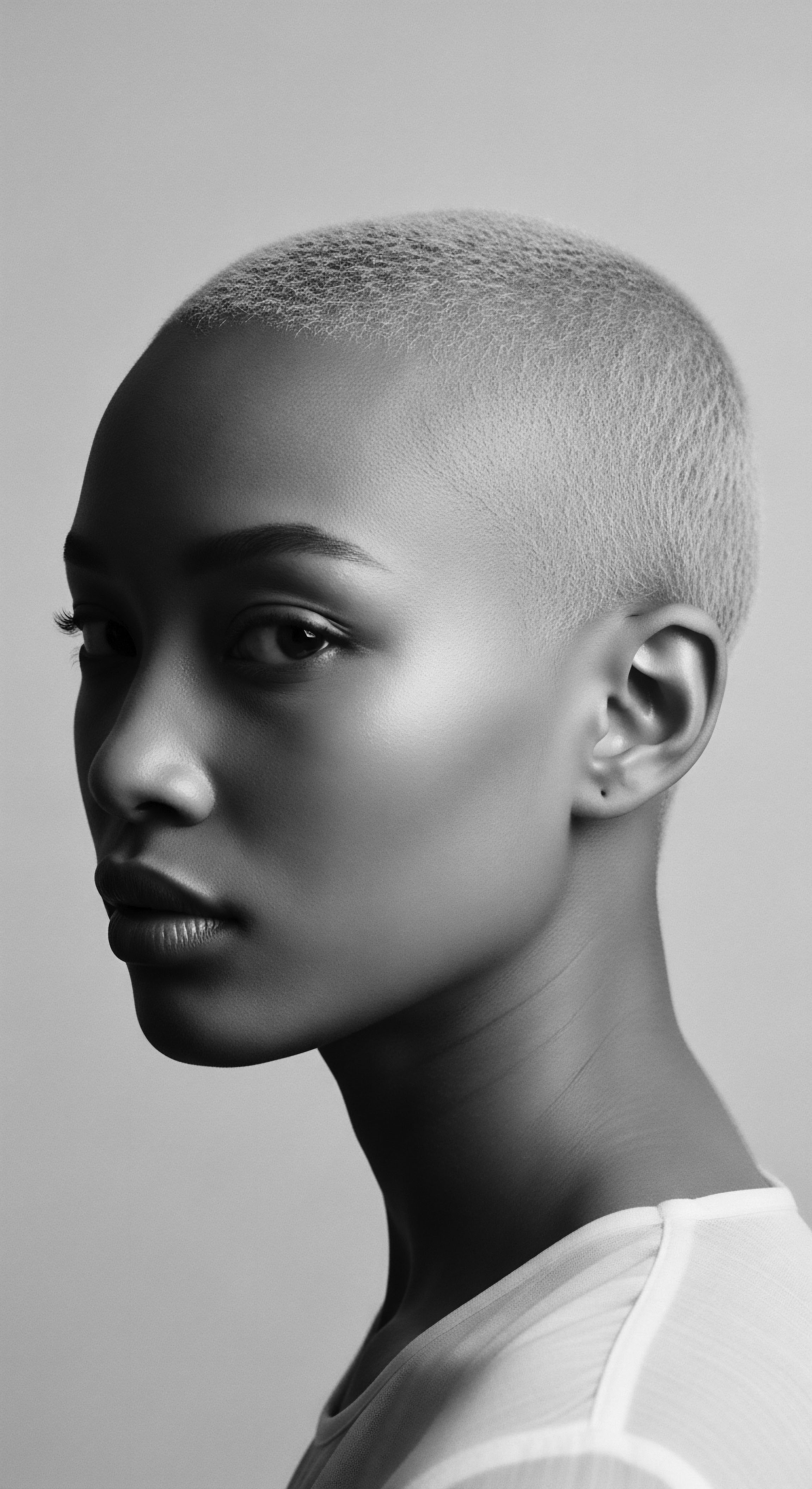
Molecular and Environmental Dynamics of Frizz in Textured Hair
From a biophysical standpoint, the explication of frizz in textured hair is rooted in the unique morphology of the hair follicle and shaft. Unlike the typically round cross-section of straight hair, coily and kinky hair strands possess an elliptical or even flattened cross-section. This structural variation results in an uneven distribution of cuticle scales along the hair shaft, creating regions where the cuticle is naturally more raised or prone to lifting. This inherent characteristic renders textured hair more porous, making it exceptionally susceptible to environmental humidity.
When ambient humidity levels are high, water molecules, particularly hydrogen, readily interact with the hydrogen bonds within the hair’s keratin polypeptide chains. This hygroscopic absorption leads to the swelling of the cortex, the inner layer of the hair. As the cortex expands, it exerts pressure on the cuticle, causing these outer scales to lift further and disrupt the smooth, reflective surface of the hair. This disorganization scatters light rather than reflecting it uniformly, contributing to the dull, undefined appearance often associated with frizz.
Furthermore, the natural coiling of textured hair means that the strands are already prone to tangling and friction, which can mechanically lift the cuticles, exacerbating frizz even in less humid conditions. The academic interpretation of Frizz Management, therefore, centers on strategies that mitigate this inherent porosity and manage the hair’s dynamic interaction with atmospheric moisture, often through the application of humectants, emollients, and film-forming agents that provide a protective barrier.
Frizz in textured hair is a complex phenomenon, a confluence of unique structural characteristics and environmental hygroscopy.
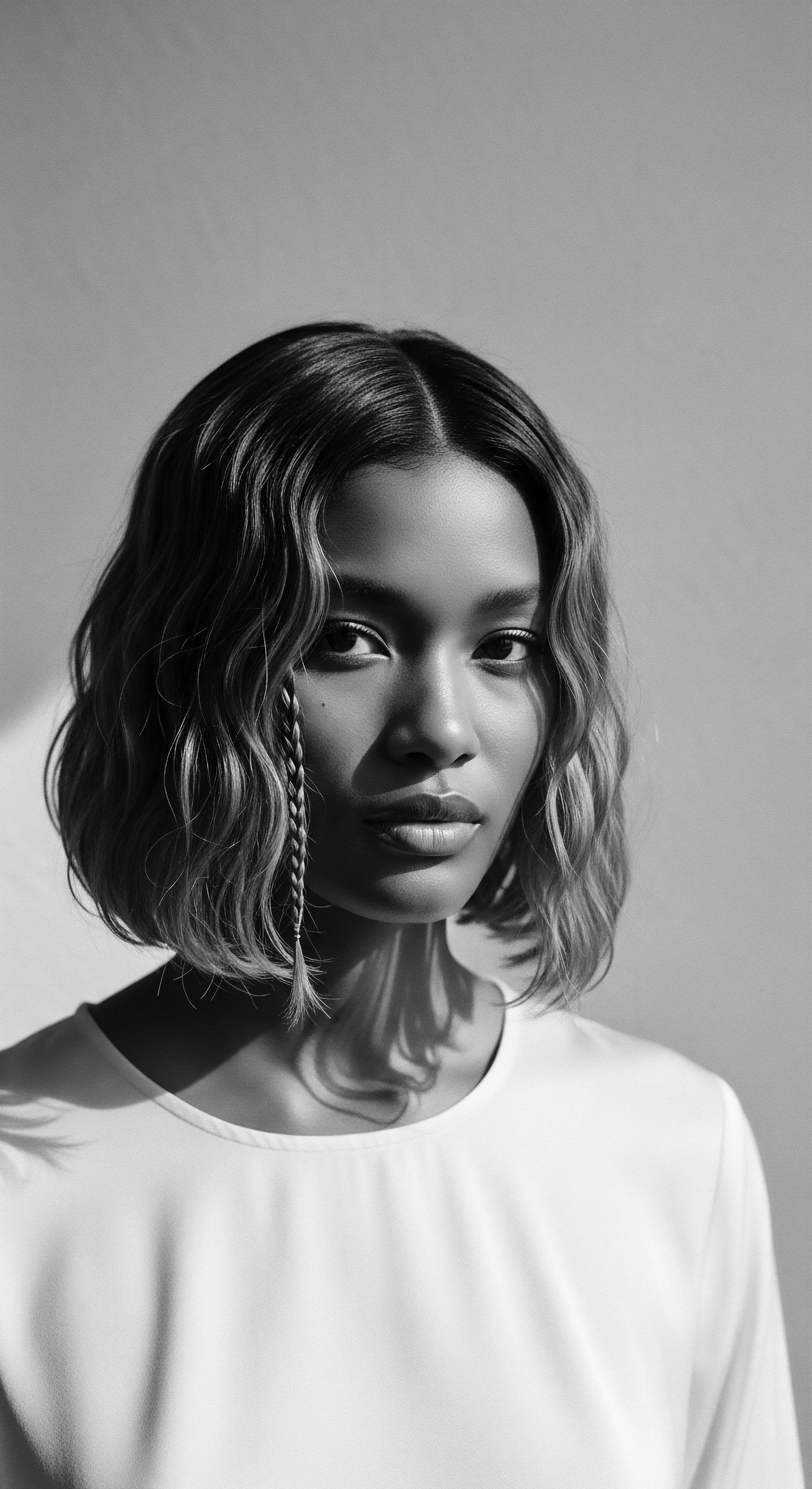
The Sociopolitical Contours of Frizz ❉ A Legacy of Othering
Beyond its scientific underpinnings, the meaning of Frizz Management for Black and mixed-race individuals is profoundly shaped by a fraught socio-historical narrative. The concept of ‘frizz’ itself became weaponized during slavery and colonialism, used to pathologize and dehumanize Afro-textured hair in contrast to Eurocentric beauty ideals of straight, smooth hair. This denotation of ‘good hair’ versus ‘bad hair’ was not merely aesthetic; it had tangible social, economic, and psychological consequences, influencing access to opportunities and fostering internalized perceptions of inferiority.
For centuries, Frizz Management was often equated with hair straightening—whether through rudimentary methods like heated butter knives and lye during slavery, or later with hot combs and chemical relaxers. This relentless pursuit of straightness, driven by societal pressure and the desire for assimilation, often came at the cost of hair health and personal well-being. A 2023 survey study found that Black respondents reported the most frequent use of chemical straighteners compared to other racial groups, with 61% indicating they used them because they “felt more beautiful with straight hair” (Nourbakhsh et al. 2023, p.
2). This statistic underscores the profound, often painful, legacy of Eurocentric beauty standards on Black hair practices and the enduring struggle for self-acceptance.
The contemporary Natural Hair Movement, emerging prominently in the 2000s, represents a powerful counter-narrative, a collective assertion of pride in textured hair in its natural state. This movement challenges the historical imperative of Frizz Management as suppression, reframing it as a process of nurturing, defining, and celebrating the hair’s authentic texture. It recognizes that “frizz” is not an inherent flaw to be eradicated, but often a natural characteristic that, when properly hydrated and cared for, contributes to the hair’s unique volume and character.
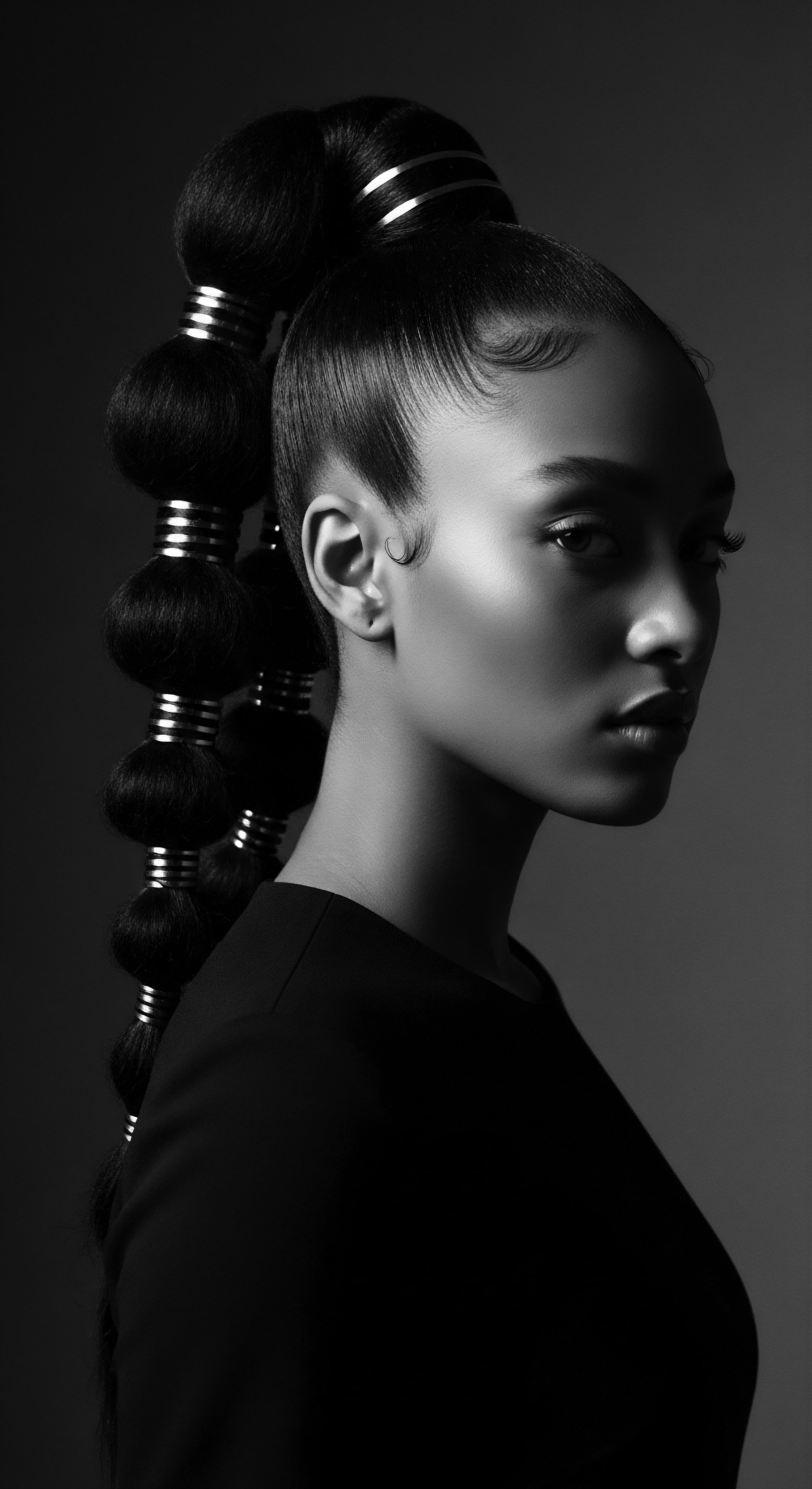
Interconnected Incidences ❉ Hair as a Medium of Resistance and Identity
The historical trajectory of Frizz Management within Black hair experiences reveals hair as a potent medium for resistance and identity. Consider the deliberate use of elaborate cornrows during the era of slavery to map escape routes or to hide rice seeds for sustenance. This strategic application of traditional styling, inherently a form of Frizz Management as it protected and organized the hair, transforms a cosmetic practice into an act of survival and defiance. The Yoruba people, for instance, considered hair as important as the head itself, believing its care brought good fortune, a sentiment that persisted even under duress.
The political significance of Frizz Management became even more pronounced during the Civil Rights and Black Power movements of the 1960s and 70s. The Afro, a style that embraced the natural volume and texture of Black hair, became a powerful symbol of racial pride, self-acceptance, and a direct rejection of Eurocentric beauty norms. This shift marked a profound re-interpretation of Frizz Management ❉ instead of fighting the hair’s natural tendency to expand, the goal became to cultivate and shape that expansion as a statement of identity. The very definition of “manageability” was contested, moving from conformity to control over one’s authentic presentation.
The ongoing journey of Frizz Management for textured hair, therefore, is not merely about scientific solutions; it is a profound meditation on the enduring legacy of ancestral wisdom, the resilience of Black communities, and the continuous reclamation of beauty standards. It is a field where the past is not simply remembered, but actively informs the present, shaping a future where every strand is celebrated for its unique story.
- Ancestral Hair Care Products ❉ Traditional practices frequently involved the use of natural ingredients such as African Black Soap for cleansing, often followed by conditioning with Shea Butter or Cocoa Butter, known for their moisturizing and sealing properties. These natural emollients would smooth the hair cuticle, reducing its tendency to absorb excess moisture from the environment.
- Styling for Preservation ❉ Styles like Cornrows, Braids, and Twists were not just aesthetic choices but served as vital protective measures. By keeping the hair bundled and tucked away, these styles minimized exposure to environmental stressors like humidity and friction, which are primary contributors to frizz.
- Communal Rituals and Knowledge Transfer ❉ Hair care was often a communal activity, fostering intergenerational bonds and ensuring the transmission of traditional techniques and knowledge. This collective approach to Frizz Management reinforced cultural identity and shared wisdom, moving beyond individual struggle to collective resilience.
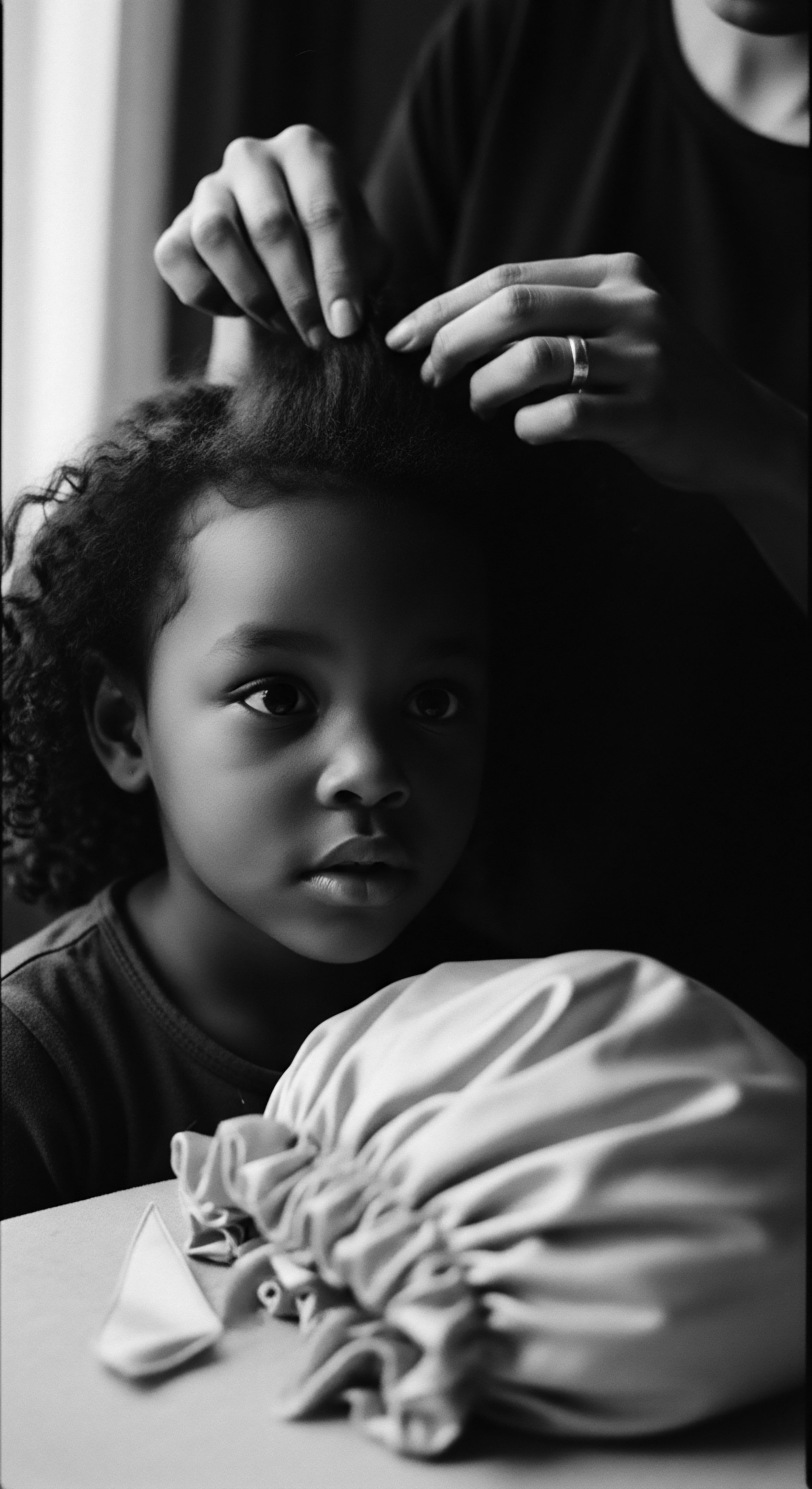
Reflection on the Heritage of Frizz Management
As we close this exploration, the story of Frizz Management for textured hair reveals itself not as a simple technical challenge, but as a living, breathing archive, deeply infused with the Soul of a Strand. It is a testament to the enduring ingenuity and resilience woven into the very fabric of Black and mixed-race hair heritage. From the elemental biology of the coil to the profound cultural statements etched in every style, the journey of Frizz Management is a reflection of a people’s unwavering spirit.
The echoes from the source, the ancient practices of oiling with rich butters and crafting protective styles, speak to an ancestral wisdom that instinctively understood the needs of textured hair. These were not fleeting trends but deliberate acts of care, deeply connected to identity and community, preserving not just hair health but also cultural continuity in the face of immense adversity. The tender thread of care, passed down through generations, often in hushed tones during moments of shared grooming, highlights how hair care became a sacred ritual, a quiet rebellion against dehumanization, and a profound act of self-love.
The journey of Frizz Management is a testament to the enduring ingenuity and resilience woven into the very fabric of Black and mixed-race hair heritage.
Today, as we stand at the precipice of the unbound helix, the conversation around Frizz Management continues to evolve. It is a dynamic dialogue that marries ancestral knowledge with scientific understanding, creating a holistic approach that honors the hair’s natural inclinations. The contemporary natural hair movement, a vibrant resurgence of pride and self-acceptance, reminds us that managing frizz is not about erasing our heritage, but about understanding, nourishing, and celebrating the glorious diversity of our strands. Each coil, each kink, each wave carries a story, a legacy of strength and beauty that continues to shape futures, unbound and free.
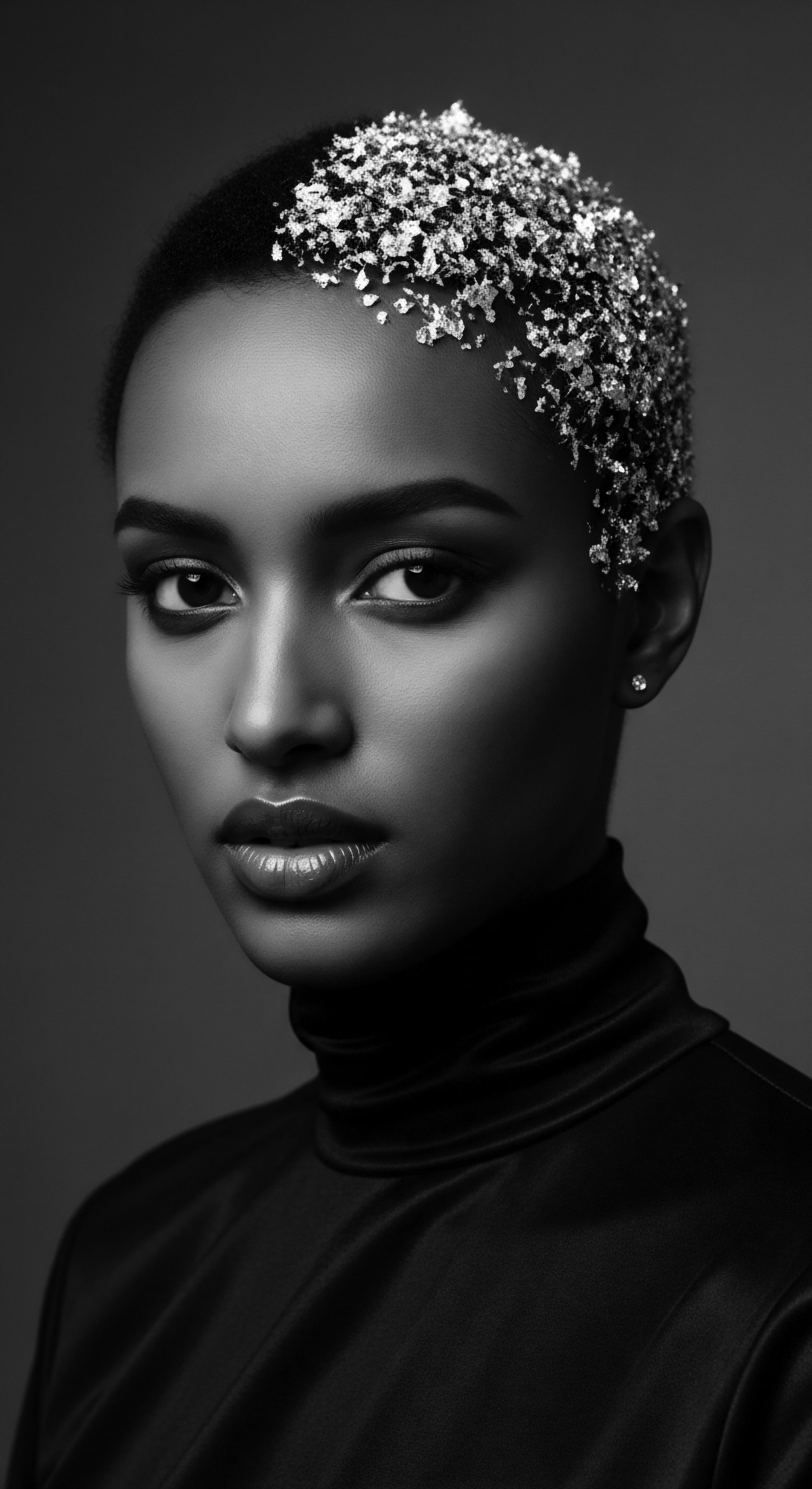
References
- BLAM UK CIC. (2022, September 15). The history of Black Hair. BLAM UK CIC.
- Nourbakhsh, S. M. Boyd, R. Williams, C. J. & Grant, J. (2023, November 30). What Every Dermatologist Must Know About the History of Black Hair. Journal of Drugs in Dermatology.
- Roberts, L. (2025, March 4). Historical Perspectives on Hair Care and Common Styling Practices in Black Women. Cutis.
- Noireônaturel. (n.d.). The History of Relaxing Frizzy Hair ❉ the Evolution of Hair Standards. Noireônaturel.
- Okoro, N. & Onyeukwu, E. (2023, August 2). The Person Beneath the Hair ❉ Hair Discrimination, Health, and Well-Being. PMC.
- Bess, K. Z. (2022, November 7). It’s More Than “Just” Hair ❉ Revitalization of Black Identity. Folklife Magazine.
- Noireônaturel. (n.d.). How frizzy hair saved the lives of slaves. Noireônaturel.
- Afriklens. (2024, November 1). African Hairstyles ❉ Cultural Significance and Legacy. Afriklens.
- Kamara, Y. (2024, February 23). Hair as Freedom. Buala.org.
- Wikipedia. (n.d.). Protective hairstyle. Wikipedia.
- HowStuffWorks. (2023, June 9). Why does humidity make my hair frizz? Science | HowStuffWorks.
- Noireônaturel. (n.d.). The Nappy Movement ❉ Celebrating the Natural Beauty of Nappy Hair. Noireônaturel.
- Danified Hair Co. (2024, September 16). The Cultural Significance of Hair Extensions in the Black Community. Danified Hair Co.
- Redken. (n.d.). Science of Curly Hair. Redken.
- Formulator Sample Shop. (n.d.). Tropical Emollient Butter Blend. Formulator Sample Shop.
- Stylist. (n.d.). A definitive timeline of the Black hair journey ❉ 8 historic moments to remember. Stylist.
- K18 Australia. (n.d.). Unravelling the Real Science Behind Frizzy Hair. K18 Australia.
- Assendelft. (n.d.). Pre-Colonial African Hairstyles ❉ A Journey Through Time and Culture. Assendelft.
- Afriklens. (2025, January 23). Hair Care Practices from the Diaspora ❉ A Look at Africa, America, and Europe. Afriklens.
- Oxford Research Encyclopedia of American History. (2017, November 20). Black Women and Beauty Culture in 20th-Century America. Oxford Research Encyclopedia of American History.
- Sartorial Magazine. (2025, January 13). Braids, Locs, and Beyond ❉ The Beauty and History of Protective Styles. Sartorial Magazine.
- ResearchGate. (n.d.). All-day hair manageability for textured hair types – A revision of the current anti-frizz technologies and suggestions for the future. ResearchGate.
- Know Your Hairitage. (n.d.). African Culture – Know Your Hairitage. Know Your Hairitage.
- Urbanhair. (2022, September 13). Monthly Guide By Urbanhair Part 2 ❉ The Interesting Science of Humidity Causing Frizzy Hair. Urbanhair.
- Wikipedia. (n.d.). Natural hair movement. Wikipedia.
- The Natural Beauty Workshop. (2011, April 14). Oils of Africa. The Natural Beauty Workshop.
- EliScholar. (2023, May 12). Historical Significance of Black Hairstyles.pptx. EliScholar.
- Redken. (2025, February 11). Embracing Natural Textures ❉ The Curly Hair Revolution in 2025. Redken.
- Being Black. (2024, July 23). The History and Evolution of Kinky Hair Since Slavery – Being Black. Being Black.
- University of New Haven. (2021, December 14). ‘Hair Has Nothing to do with Competency’ – University of New Haven. University of New Haven.
- Buala.org. (2024, February 13). Ancient Gems ❉ A Historical Survey of African Beauty Techniques. Buala.org.
- Reddit. (2021, August 26). No raw oils and butters vs. Traditional African hair care? ❉ r/Naturalhair. Reddit.
- Thrifts & Tangles. (2021, December 16). The Evolution of Black Hair for Beauty & Resistance. Thrifts & Tangles.
- Refinery29. (2021, February 23). The Evolution Of The Natural Hair Movement. Refinery29.
- FunTimes Magazine. (2024, June 25). Cocoa and Shea Butters ❉ African Beauty Secret for Hair Care and Glowing Skin. FunTimes Magazine.
- Aston Chemicals. (n.d.). Shea emollients provide tailor made potential. Aston Chemicals.
- Scholar Commons. (n.d.). Examining Afrocentricity and Identity Through the Reemergence and Expression of Natural Hair i – Scholar Commons. Scholar Commons.
- Stylist. (n.d.). Best ingredients to nourish and hydrate afro-textured hair, according to the experts. Stylist.
- Confluence. (2021, February 7). Redefining Black Beauty ❉ Hair-Care Packaging. Confluence.
- My Sasun. (2023, May 19). Exploring the Rich World of Nigerian Hair and Beauty Products. My Sasun.
- EliScholar. (2023, May 12). The Development Of A Self- Esteem Toolkit For Black Adolescent Girls Centering Hair As A – EliScholar. EliScholar.
- Walden University Research. (n.d.). African American Women’s Perceptions of Self-Value in the Transition to Natural Hair – ScholarWorks | Walden University Research. Walden University Research.
